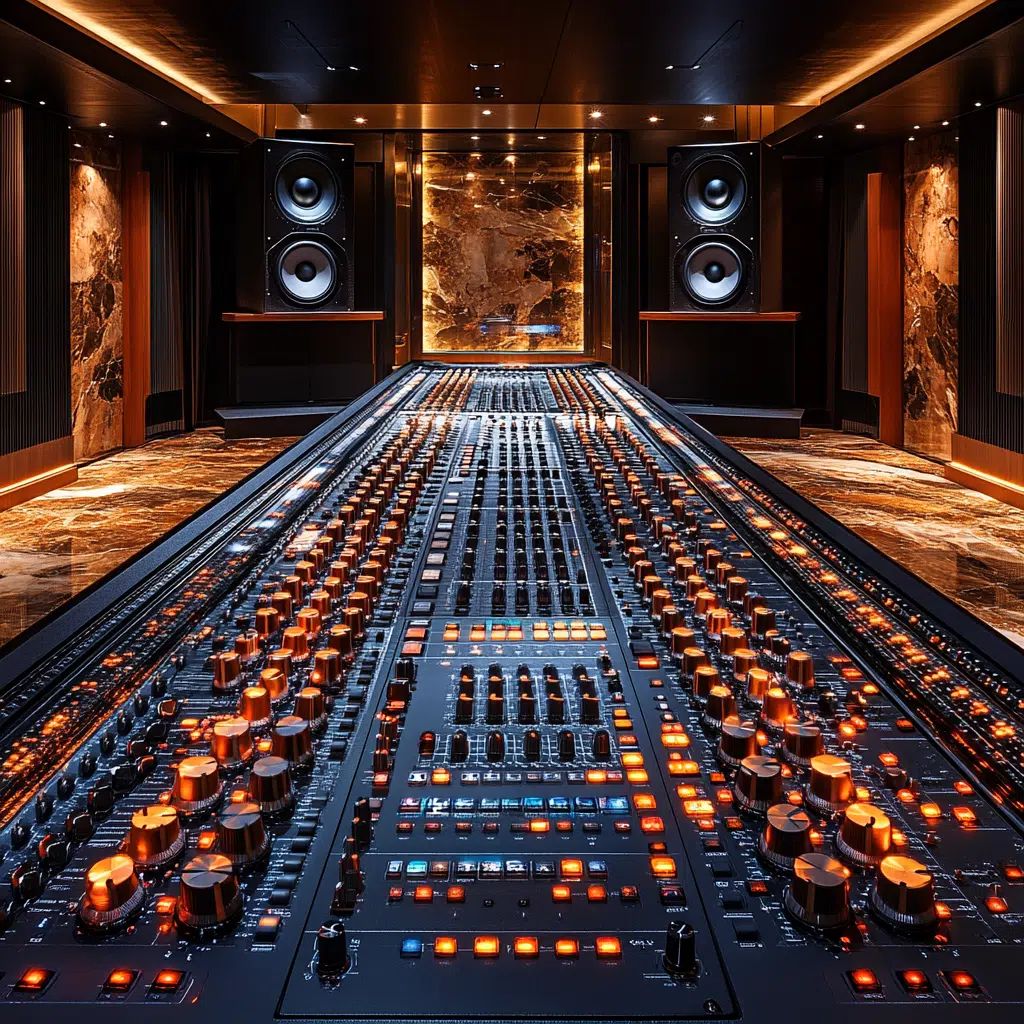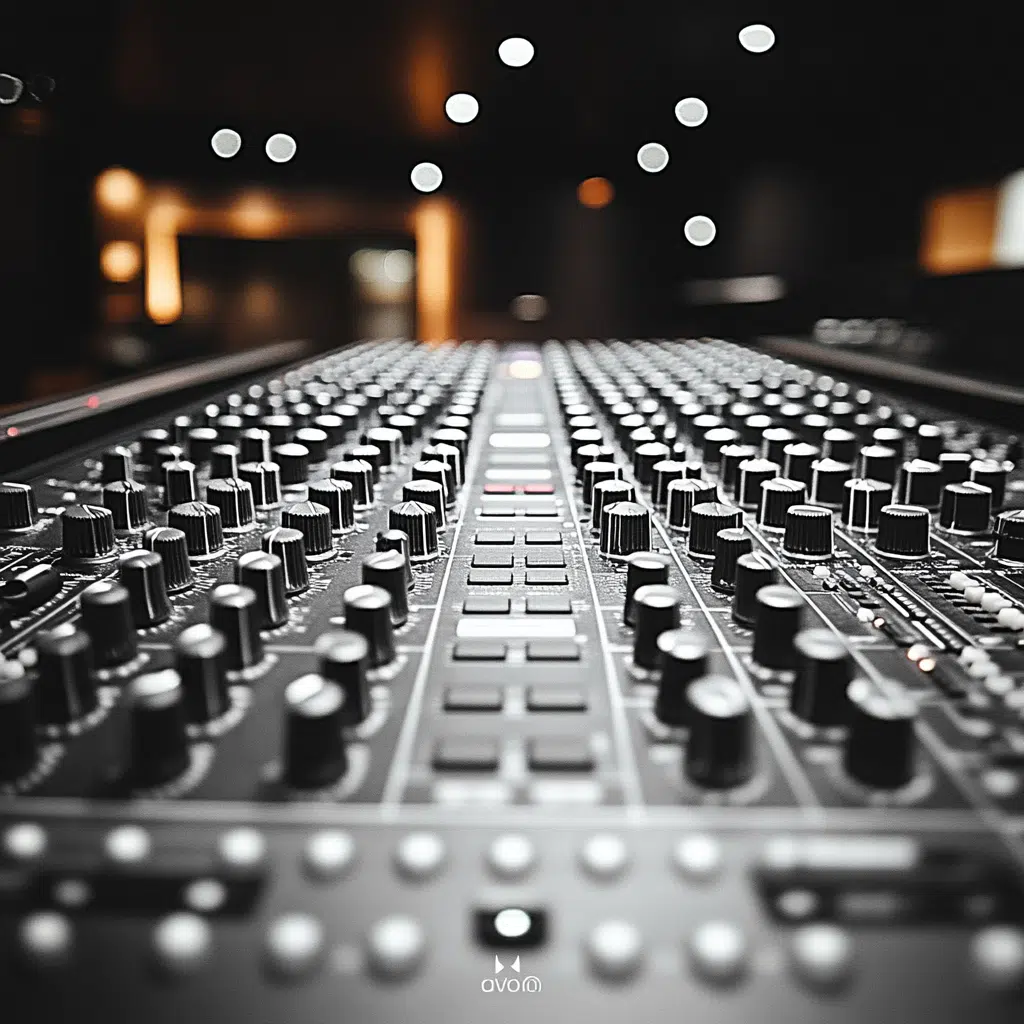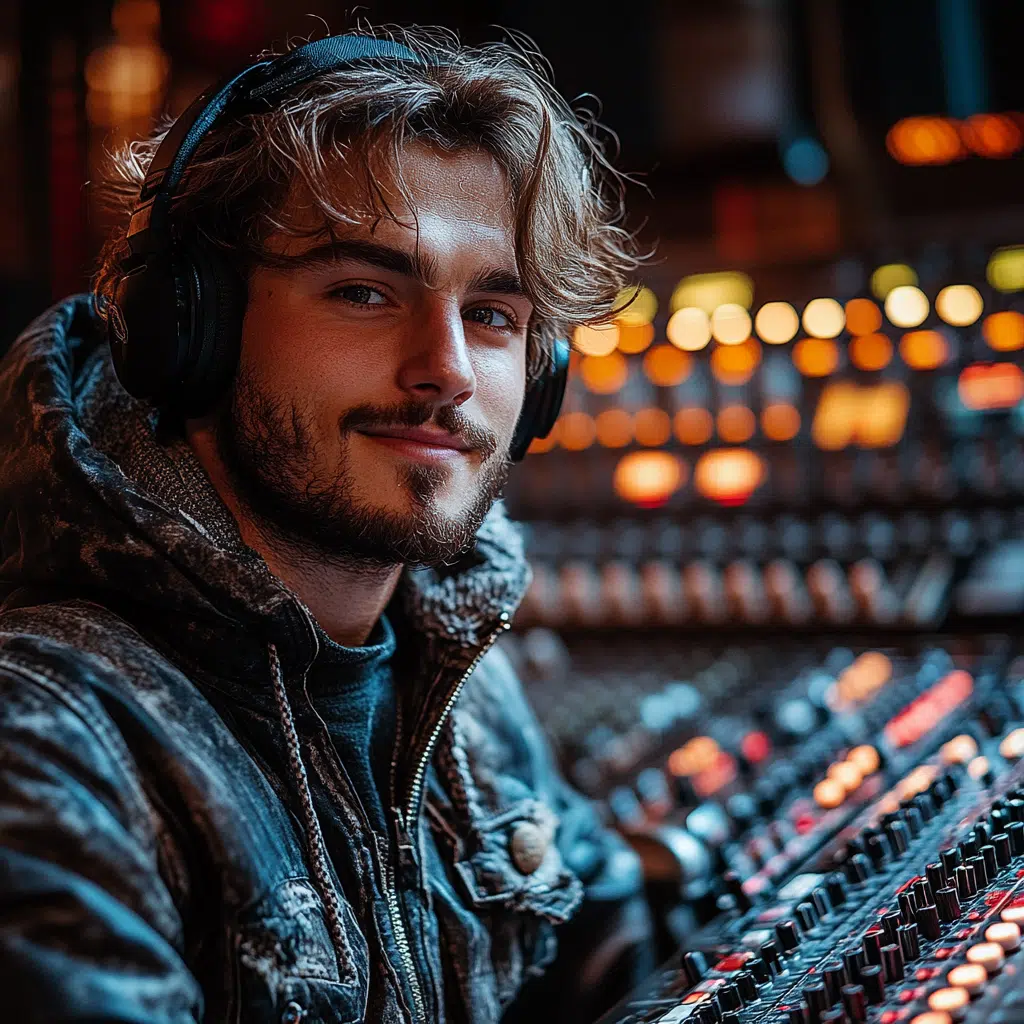Understanding Dolby Atmos Technology and Its Advantages
Dolby Atmos stands out as a leap forward in audio engineering, providing a three-dimensional audio experience that outpaces traditional surround sound. By conceptualizing sounds as independent objects in a spatial field, it ushers in unmatched realism and depth. Major streaming services such as Netflix and Disney+ already utilize Dolby Atmos, delivering audiences a truly enhanced sensory journey.
Benefits of Dolby Atmos in Filmmaking
- Enhanced Immersion: Sound envelops viewers, making them feel like they’re at the heart of the action.
- Innovative Sound Design: It empowers designers to experiment with audio placement, amplifying storytelling.
- Versatility: Content mixed in this format adjusts to a range of playback settings, ensuring quality across all devices, from upscale home theaters to standard soundbars.
Dolby Atmos provides Mixing Los Angeles with exceptional quality, crucial for top-notch productions.
The Seamless Integration of Online Mixing Solutions
With advancements in internet connectivity and cloud infrastructure, online tools for Dolby Atmos mixing have become more accessible than ever. Platforms like Avid Cloud Collaboration and Waves Online Mixing democratize high-performance audio engineering, bringing these capabilities to creators worldwide.
Key Online Mixing Platforms
- Avid Cloud Collaboration: A powerhouse in the industry, Avid facilitates global real-time collaboration through cloud-based projects, bringing together sound engineers from across the globe.
- Waves Online Mixing: Known for its intuitive interface, Waves offers a comprehensive suite of plugins supporting Dolby Atmos workflows, catering to both indie producers and large-scale studios.
- SoundBetter by Spotify: This platform connects creators with elite mixing engineers globally, providing quality Dolby Atmos mixes by industry veterans.
Online platforms make Remote Mixing For Films easy, as seen in projects spanning from Mumbai to Los Angeles, eliminating location as a barrier.
| Category | Details |
| Dolby Atmos Tools | – Plugins: Dolby Atmos Music Panner available as AU, AAX, VST 3. |
| – DAWs Supported: Avid Pro Tools, Apple Logic Pro, Ableton Live, Steinberg Nuendo. | |
| – Platform: Apple Mac. | |
| Mixing & Delivering | – Requirements: Proper loudspeaker setup, Dolby Atmos Renderer. No license required. |
| – Distribution: Supported by increasing number of digital music services. | |
| Speaker Setup | – Overhead Speakers: Conventional with wide dispersion characteristics suitable for home theaters. |
| Mixing Methodology | – Audio Objects: Mix using discrete, full-range audio objects that move in three-dimensional space. |
The Practicality and Accessibility of Remote Mixing Services
Stepping into remote mixing not only bridges geographical gaps but also slashes traditional studio costs. Artists and filmmakers can collaborate with professionals who have access to the latest tools, all in a virtual setting.
Success Stories: Real-World Applications
- Billie Eilish’s “Happier Than Ever”: This pioneering Dolby Atmos project was achieved through seamless remote teamwork spanning multiple continents.
- Christopher Nolan’s “Tenet”: The complex audio layers were expertly managed and enhanced by remote teams using Dolby Atmos.
These examples highlight the power and flexibility of online mixing in delivering high-caliber soundscapes.
Tips for Maximizing Online Mixing Potential
- Invest in Reliable Internet: A stable, high-speed connection is crucial for handling large audio files and real-time collaboration.
- Utilize Online Learning Resources: Platforms such as YouTube and MasterClass offer materials from renowned sound engineers to hone your Dolby Atmos skills.
- Explore Different Tools: Experiment with trial versions of various platforms to find the one that best suits your creative vision.
Remote Mixing for Films offers tangible benefits, like reduced costs, while maintaining high-quality sound production standards.
The Future: Emerging Trends and Innovations
As we look forward, technologies like 5G and AI are set to further enhance Online Mixing for Dolby Atmos. These innovations promise greater sophistication and greater accessibility, transforming not just sound, but experiences that resonate emotionally with viewers.
Sound creators are encouraged to embrace these technologies, expanding their storytelling potential. With every advance in audio mixing, the future holds boundless creative possibilities for every visionary willing to seize them. Let’s welcome the sonic opportunities that Dolby Atmos online mixing unlocks in this continually evolving audio landscape.
In summary, the fusion of creativity and technology in Online Mixing for Dolby Atmos is paving the way for the next generation of storytelling. Whether you’re a seasoned professional or an aspiring creator, these innovations offer an unmatched canvas for realizing and sharing your creative endeavours.
Online Mixing for Dolby Atmos: Transform Sound
A Sound Revolution
Online Mixing for Dolby Atmos represents a seismic shift in how we experience audio. This cutting-edge technology creates a multi-dimensional space where each sound moves with stunning clarity and precision. Wondering why many polished productions sound as if they’re happening in the same room with you? It’s owed to Dolby Atmos Sound Mixing Los Angeles,( which allows sound to travel anywhere in a 3D space. This is quite a game-changer, isn’t it?
Expanding Horizons in Sound
Ever imagine crafting a masterpiece from across the globe? Online Mixing for Dolby Atmos lets you do just that. Whether you’re in bustling London or vibrant Mumbai, you can create mixes that rival any from Remote Sound Mixing Mumbai.( And, speaking of global connections, did you know sound design shares surprising strategies with distant fields? Just like keeping up with Union Berlin vs. Real Madrid standings( could offer insights into predicting the most exhilarating match twists, understanding sound waves can transform your production game.
Facts That’ll Sound Right
Let’s dive into intriguing facts: you don’t pay hefty amounts monthly — akin to understanding how to BGE pay bill( efficiently. Savvy sound mixers also show off diverse skill sets that rival talents in unexpected industries. Remember, Moises Arias movies and TV shows?( Such versatility is echoed in the way sound designers switch between different audio forms, each shaping the emotional core of a story.
Harnessing the power of Online Mixing for Dolby Atmos involves navigating through these fun and insightful tidbits. By learning these, you’re not just another sound troll but part of an ever-evolving audio journey that continues to wow audiences worldwide.
What software is used to mix Dolby Atmos?
The Dolby Atmos Music Panner is available as a plug-in for AU, AAX, and VST 3 formats and works with leading DAWs such as Avid Pro Tools, Apple Logic Pro, Ableton Live, and Steinberg Nuendo. These tools are key for mixing Dolby Atmos on the Apple Mac platform.
Can you mix in Dolby Atmos?
You can definitely mix in Dolby Atmos! Once you’ve got your speakers set up and have the Dolby Atmos Renderer installed, you’re all set to go at it. You don’t even need a license, which makes it super accessible.
How much does Dolby Atmos mixing cost?
Dolby Atmos mixing costs typically range from $300 to $540. Prices can vary based on the complexity of the project and the services required.
What is the best setup for Dolby Atmos music?
The best setup for Dolby Atmos music involves having speakers, including some overhead. Conventional speakers with wide dispersion characteristics work well in a Dolby Atmos environment, so you get those sounds perfectly positioned in the three-dimensional space.
How much does Dolby Atmos renderer cost?
The Dolby Atmos Renderer itself doesn’t have a cost; it comes as part of the setup when you’re ready to mix. Consider the expenses more about getting your speakers and environment right.
How many speakers do I need for Dolby Atmos mixing?
For Dolby Atmos mixing, a setup can vary depending on your space, but you generally need at least a 5.1.2 setup, which includes five main speakers, one subwoofer, and two ceiling speakers to get that immersive experience.
How to make Dolby Atmos sound better?
To make Dolby Atmos sound better, ensure your speaker system is correctly set up with proper calibration. Use speakers with wide dispersion characteristics and optimize your listening environment for better acoustics.
Which audio format is best for Dolby Atmos?
Dolby Atmos uses audio objects that can move freely in three-dimensional space, making it quite flexible. However, the format itself is all about delivering that 3D sound experience regardless of the specific audio format.
Do Atmos mixes get mastered?
Yes, Atmos mixes do get mastered. Just like stereo mixes, mastering is crucial in ensuring that the final sound is polished and translates well across all playback systems.
What is the minimum room size for Dolby Atmos mixing?
There isn’t a set minimum room size for Dolby Atmos mixing, but a decent-sized room is recommended to properly position speakers to achieve accurate spatial audio. The key is ensuring you have the right acoustics and speaker placement.
What is the loudness of Dolby Atmos mix?
Loudness for a Dolby Atmos mix generally follows standard guidelines, similar to stereo mixing, but it’s crucial to check the loudness levels across the entire three-dimensional sound sphere to ensure a balanced mix.
Do you need multiple speakers for Dolby Atmos?
Yes, you do need multiple speakers for Dolby Atmos to achieve that immersive sound environment. At least a minimal setup includes having some overhead speakers to truly experience sound from all around.
How to mix on Dolby Atmos?
Mixing on Dolby Atmos involves setting up your speakers and audio tools properly, utilizing a DAW that supports it, and accounting for 3D audio movement. You’d want to create a soundscape that utilizes the space in all directions.
Which sound mode is best for Dolby Atmos?
There’s not a specific sound mode that is “best” for Dolby Atmos because it’s about creating a spatial environment rather than modes. However, having a system set with wide dispersion and accurate calibration helps achieve the best results.
Do you need 7.1 for Dolby Atmos?
You don’t necessarily need a full 7.1 setup to create Dolby Atmos, but having at least a 5.1.2 speaker setup is usually sufficient to start experiencing those spatial audio effects effectively.
What media player software is Dolby Atmos?
Most modern media player software supports Dolby Atmos, particularly those designed for high-quality video and audio streaming services. It’s a growing list as compatibility expands in digital distribution.
What DAWs support Dolby Atmos?
DAWs like Avid Pro Tools, Apple Logic Pro, Ableton Live, and Steinberg Nuendo on the Apple Mac platform support Dolby Atmos, giving you a wide selection of tools to work with for mixing in this immersive format.
Which software is used for sound mixing?
Sound mixing often uses software like Pro Tools, Logic Pro, and many others that cater to various audio engineering needs. These offer the flexibility and precision needed for professional sound design and mixing.
Can you mix Dolby Atmos in Pro Tools?
Yes, you can mix Dolby Atmos in Pro Tools. It’s one of the industry-leading DAWs with the capabilities needed to handle such immersive audio mixes and integrates well with the needed plug-ins and renderers.



